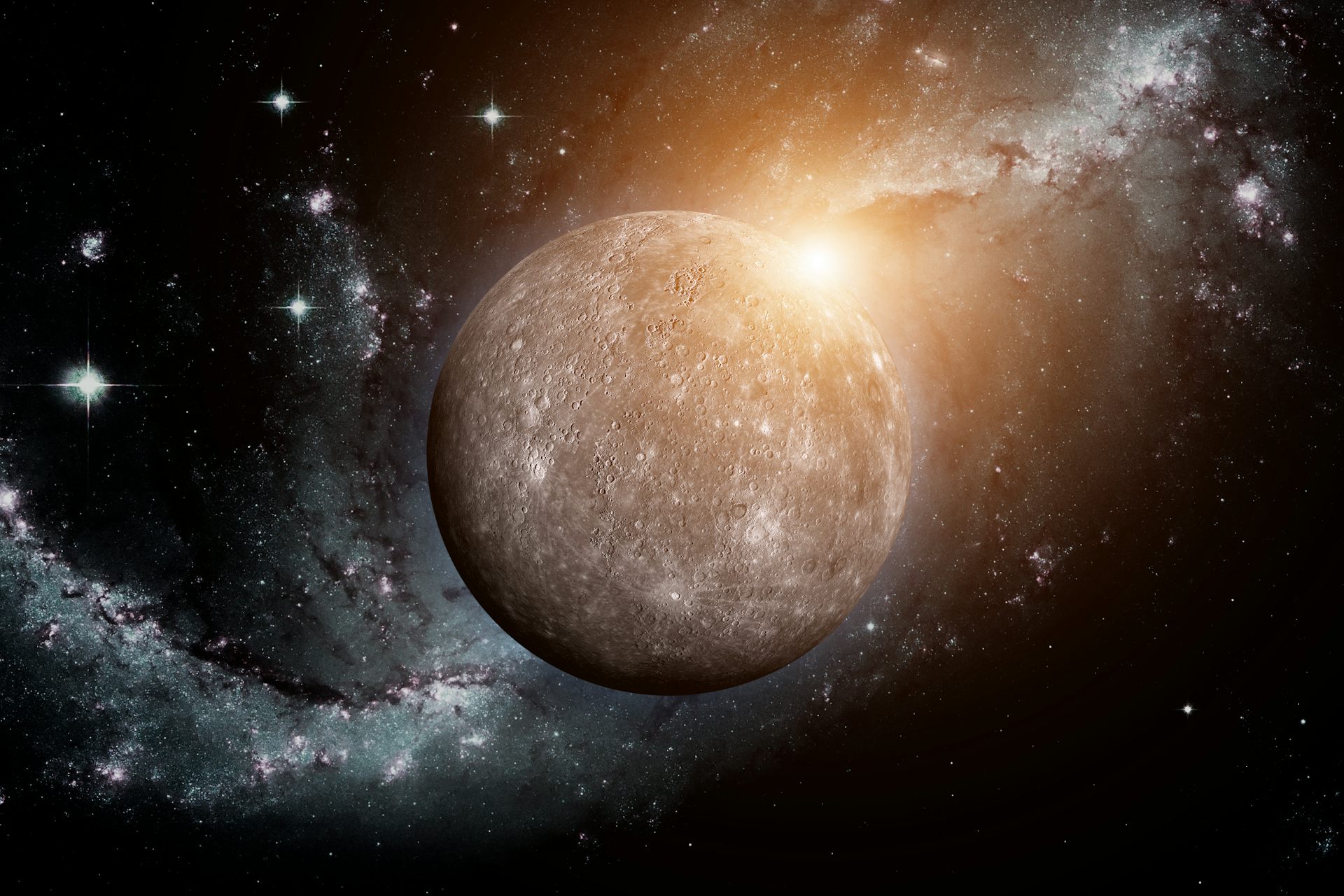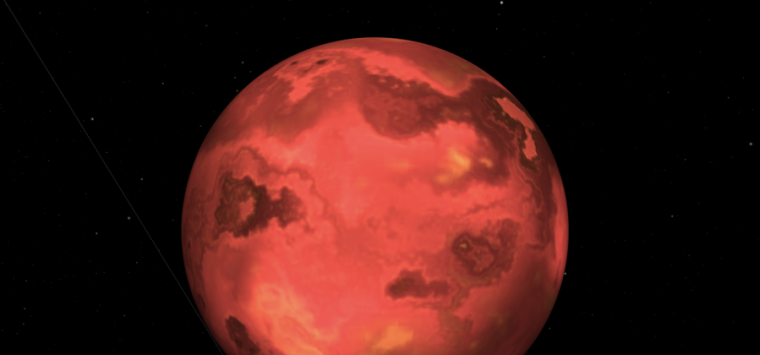Metals are everywhere in the Universe, from hot gas giants where it rains molten iron to heavy elements formed as a star goes supernova. Exoplanet GJ 367b one-ups them all. This planet is made of metal.
GJ 367b is an extreme planet. This “super Mercury,” which orbits its star once every 7.7 hours, was first discovered by NASA’s TESS planet hunter in 2015. Now, scientists from the University of Turin in Italy and the Thüringer Landessternwarte in Germany have examined more recent measurements of the planet using ESO’s HARPS spectrograph along with the original TESS observations. They found that this object is almost twice as dense as Earth—which suggests it is most likely made of solid iron.
Even though GJ 367b is now a solid iron planet, it might have once been the core of an ancient rocky planet.
“Thanks to our precise mass and radius estimates, we explored the potential internal composition and structure of GJ 367b, and found that it is expected to have an iron core,” the scientists said in a study recently published in The Astrophysical Journal Letters. It’s just that the core takes up over 90 percent of the planet.
Heavy metal groupie
When GJ 367b was discovered, it was just another exoplanet in a distant star system. TESS had a relatively easy time identifying it because there was not an enormous size difference between it and its star. TESS catches an exoplanet transiting its star when the star dips in brightness, as its light is temporarily blocked by a planet. Some factors make GJ 367b more obvious. Though it is still small in comparison to its star, it is not nearly as small as Earth compared to the Sun, so it blocks more light when it transits. It also orbits dangerously close and mind-blowingly fast.
What wasn’t so obvious yet was what it was made of. Finding out the density of an object based on its mass and radius can give scientists an idea of its composition. TESS measured the radius of GJ 367b based on how much light it obscured. To determine the mass of the planet, the scientists used later radial velocity measurements, which detect the gravitational pull of the planet on its host star.
GJ 367b turned out to be so incredibly dense that it’s 1.85 times the density of Earth, which is roughly in line with that of iron. It is now the densest known planet with a short orbital period and the densest super-Mercury. But how could an entire planet form out of nothing but iron?
Too much headbanging
“It is not clear how a low-mass, high-density planet like GJ 367b forms,” the scientists said in the same study. “Possible pathways may include the formation out of material significantly more iron-rich than thought to be normally present in protoplanetry disks.”
But there are many other possible pathways. All the more probable formation scenarios are based on GJ 367b once having been a rocky planet, not unlike Earth or Mars. Its two companion planets, which orbit farther out, are both rocky planets, so all three may have formed the same way. From there, however, GJ 367b would have had a distinct history that involves it losing its outer, rocky layers and ending up as nearly all core.
The outer layers of GJ 367b were possibly stripped by a collision or series of collisions, which is what is thought to have happened to Mercury. If an object—or enough objects—with the right mass and impact velocity smashed into it, the rocky layers could have been liberated and lost.
Another possibility is the intense radiation GJ 367b faced from orbiting so close to its star that it burned away everything else and left it with nothing but its solid iron core. Outer material could have either sublimated and then been lost to space. GJ 367b might have also experienced some combination of collisions and irradiation to become the metal planet it is.
How it got so close to its star to begin with is also an unanswered question, given it’s unlikely to have formed there. The scientists think that gravitational interactions with other planets could have sent it migrating inward from where it formed.
However GJ 367b turned into a metalhead, further investigations into this planet could eventually tell us more about how rocky planets and planets with short orbital periods form and evolve. It’s always the rebels.
Astrophysical Journal Letters,2023. DOI: 10.3847/2041-8213/ace0c7



3175x175(CURRENT).thumb.jpg.b05acc060982b36f5891ba728e6d953c.jpg)

Recommended Comments
There are no comments to display.
Join the conversation
You can post now and register later. If you have an account, sign in now to post with your account.
Note: Your post will require moderator approval before it will be visible.